Manitoba, Canada
Sphingidae Larvae
Ceratomia amyntor fifth instar, Wolseley, Winnipeg, Manitoba,
August 8, 2011, courtesy of Robin.
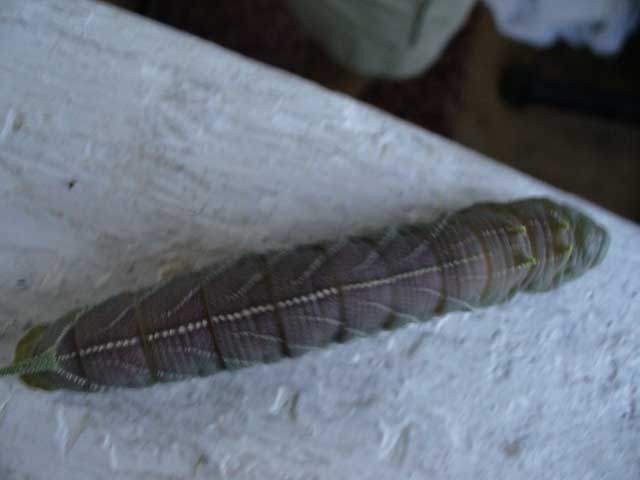
Ceratomia amyntor fifth instar, Wolseley, Winnipeg, Manitoba,
August 8, 2011, courtesy of Robin.
Richard Westwood, Dept. of Biology, University of Winnipeg, indicates "I checked your sphinx moth website and noted a couple of additions of interest. Sphinx canadensis does not seem to be on your Manitoba list (It is moderately common here). Also a stray Eupmorpha labruscae was caught in Winnipeg Aug 24/1971 and a stray Agrius cingulata on Aug 8/1986. They are both located in the Manitoba Provincial Museum collection." The larvae of the migrants/strays such as cingulata and labruscae are not depicted here, as I do not think those species breed in Manitoba.
Larvae often show considerable variation.
Please help me develop this list with improved, documented accuracy by sending sightings (species, date, location), preferably with an electronic image, via email to Bill Oehlke.
For care of "found larvae/caterpillars" visit Manduca sexta larva, central Texas, August 21, 2008, Trina Woodall.
The BAMONA website, as of August 10, 2011, only confirms Hyles lineata for Manitoba.
Many thanks also to William Stadnyk who sends the following image of Sphinx kalmiae larva, feeding on lilac.
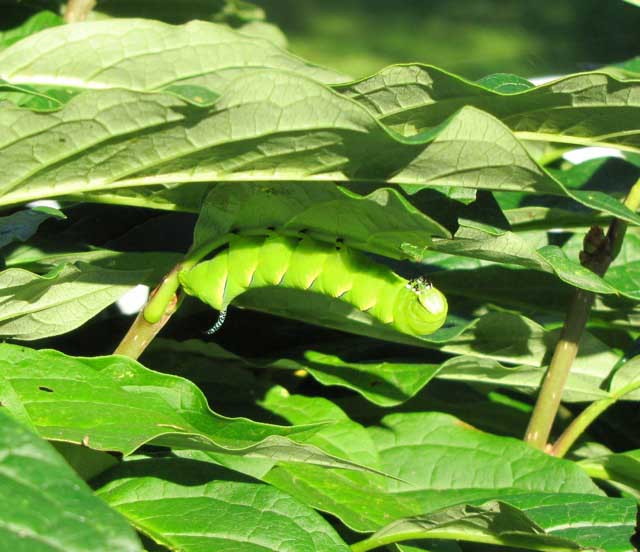
Sphinx kalmiae, Rossman Lake, Manitoba, August 2, 2012, courtesy of William Stadnyk.
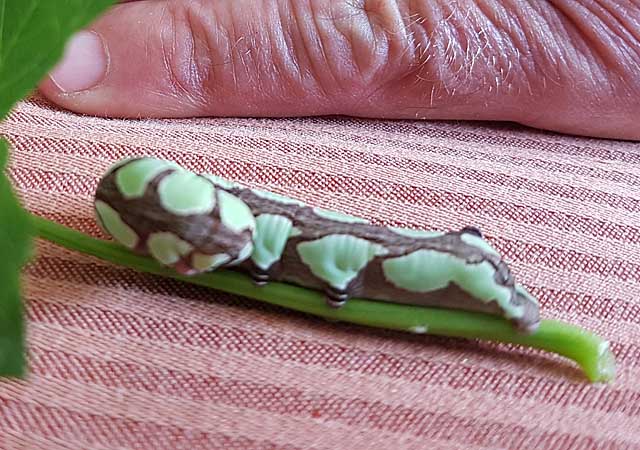
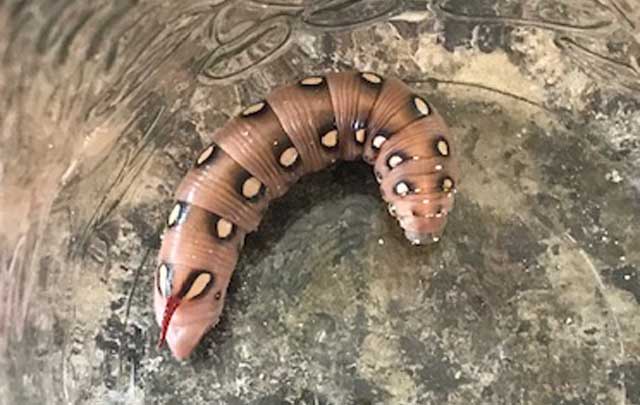
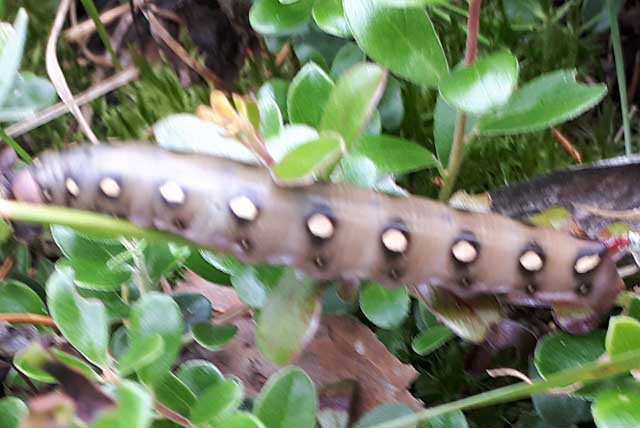
Hyles gallii, prepupal larva, Belair Victoria Beach, Manitoba,
August 6, 2022, courtesy of Barb Sheppard.
Visit Manitoba Sphingidae: Adult Moths
Visit Manitoba Catocala: Underwing Moths
Sphinginae subfamily
Smerinthini Tribe:
Macroglossinae subfamilyDilophonotini tribe:
See Hemaris comparison to help distinguish the next three species.
Philampelini tribe:
Macroglossini tribe:
Hyles gallii, mature larva, Belair Victoria Beach, August 6, 2022, Barb Sheppard.
|
Enjoy some of nature's wonderments, giant silk moth cocoons. These cocoons are for sale winter and fall. Beautiful Saturniidae moths will emerge the following spring and summer. Read Actias luna rearing article. Additional online help available.
Eggs of many North American species are offered during the spring and summer. Occasionally summer Actias luna and summer Antheraea polyphemus cocoons are available. Shipping to US destinations is done from with in the US.
Use your browser "Back" button to return to the previous page.
Please send sightings/images to Bill. I will do my best to respond to requests for identification help.
 Show appreciation for this site by clicking on flashing butterfly to the left. The link will take you to a page with links to many insect sites. |
I very much appreciate all the many images that have been sent to me, or of which I have been granted permission to copy and post from other websites. All images on this site remain the property of respective photographers.
If you would like to contribute to the maintenance of this website by sending a contribution to
Bill Oehlke
Box 476
155 Peardon Road
Montague, Prince Edward Island, C0A1R0
Canada
your donation would be much appreciated and would be used for
1) paying for webspace rental;
2) paying for computer maintenance and software upgrades;
3) purchases of additional text reference material (journals and books) in an effort to stay current with new species;
4) helping to pay my daughter's tuition (completed spring of 2013), with the rest going to humanitarian aid.
I also hope to expand the North American Catocala site as well as the Sphingidae of the Americas site, to worldwide sites, and that will require additional funds for reference materials, etc. Both of those site are linked from your WLSS homepage.